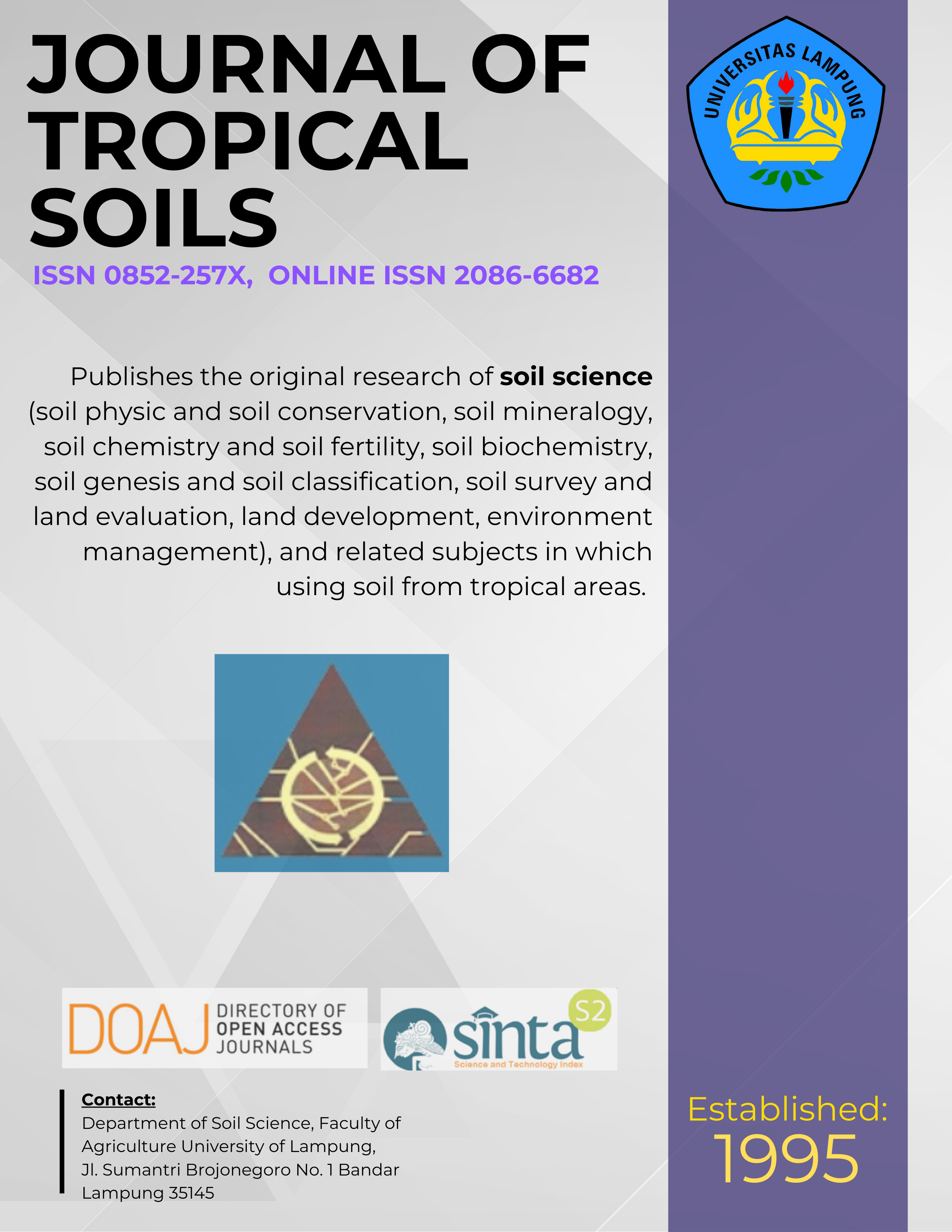Land Suitability and Proposed Land Utilization of Selaru Island, West Southeast Moluccas Regency for Development Food Crops
Main Article Content
Abstract
The study was conducted in Selaru Island, West Southeast Moluccas Regency in an area of 32,217 ha. The research objective was to determine the land suitability and proposed land utilization of Selaru Island for development of food crops. The results showed that Selaru Island has a rather suitable (S2) and marginally suitable (S3) for six crops (upland rice, corn, peanuts, mungbeans, sweet potato, and caladium) covering an area of 19,330 ha and not suitable permanent (N2) for the six crops covering an area of 3,905 ha, while the area of 8,982 ha partly classified accordingly (S3) to plant upland rice and calladium and partially classified as not suitable (N1 and N2) for corn, peanuts, mungbeans, and sweet potatoes. The main limiting factor to the primary land use for food crops in Selaru Island, West Southeast Moluccas Regency among others are the temperatures (the average annual temperature is high), rooting medium (soil solum is shallow), nutrient retention (soil pH is rather alkaline to alkaline), erosion hazard level is moderate, and terrain (wave, rocks on the surface of the soil, and rock outcrop).The proposed land utilization of Selaru Island for food crops based on land suitability classes are (1) food crops of upland-1 with the main commodities of corn, mungbeans, uwi/kumbili and caladium an area of 5,299 ha, (2) food crops of upland-2 with the main commodities of upland rice, uwi/kumbili and caladium an area of 8,982 ha, and (3) food crops of upland-3 with the main commodities peanuts and mungbean an area of 14,031 ha. Development of food crops in Selaru Island need to consider the priority scale factor, the level of compliance, and social culture of the local community.
Keywords: Food crops, land suitability, limiting factor, proposed land utilization, Selaru Island
Downloads
Article Details
Section
License for Authors
Authors who publish with this journal agree to the following terms:
- Authors retain copyright and grant the journal right of first publication with the work simultaneously licensed under a Creative Commons Attribution License that allows others to share the work with an acknowledgement of the work's authorship and initial publication in this journal.
- Authors are able to enter into separate, additional contractual arrangements for the non-exclusive distribution of the journal's published version of the work (e.g., post it to an institutional repository or publish it in a book), with an acknowledgement of its initial publication in this journal.
- Authors are permitted and encouraged to post their work online (e.g., in institutional repositories or on their website) prior to and during the submission process, as it can lead to productive exchanges, as well as earlier and greater citation of published work (See The Effect of Open Access).
License for Regular Users
Other regular users who want to cite, distribute, remix, tweak, and build upon author’s works, even for commercial purposes, should acknowledge the work’s authorship and initial publication in this journal, licensed under a Creative Commons Attribution License.

